Our readers often ask us how big an asteroid would have to be to destroy Moscow. The answer is not as simple as it seems, since the consequences of a collision depend not only on the diameter but also on some other parameters. So, we have prepared several scenarios of how this should happen.
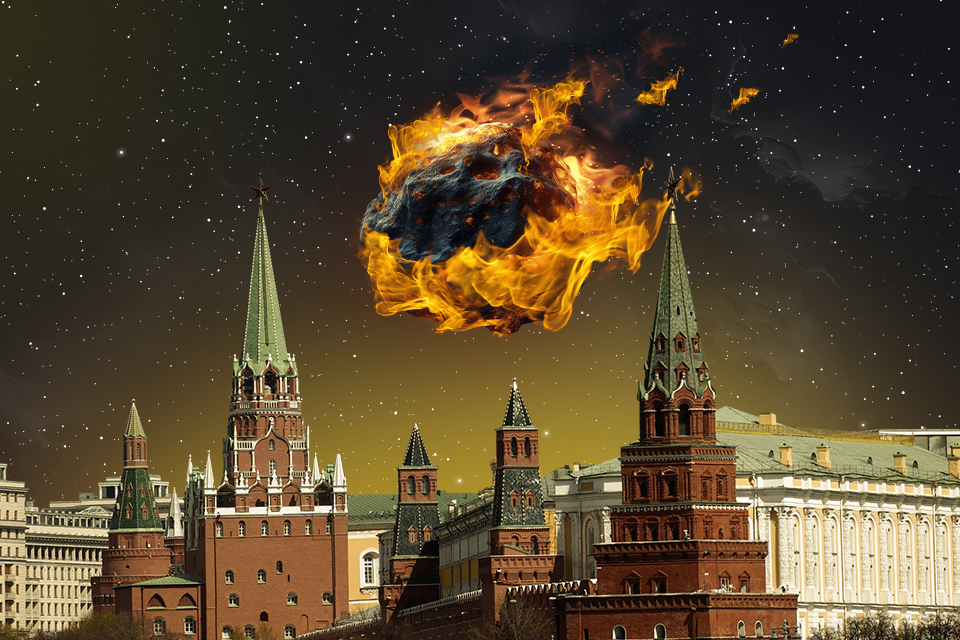
Asteroid collision theory
From time to time, rocks fall to earth from space. Usually they are quite small and do not pose a threat. However, when there is even a minimal possibility that an asteroid will crash into the planet, everyone starts to panic, because it could potentially pose a threat to the entire human civilization.
Meanwhile, there are places on Earth that definitely deserve a rock from the sky. And the first among them is Moscow. Ukrainians are constantly asking about the size of an asteroid that could destroy it.
This question is not as simple as it seems, so we should start with the theory. The destructive power of any space rock lies in its kinetic energy. If you look at its formula, it contains mass in the first degree and velocity in the second.
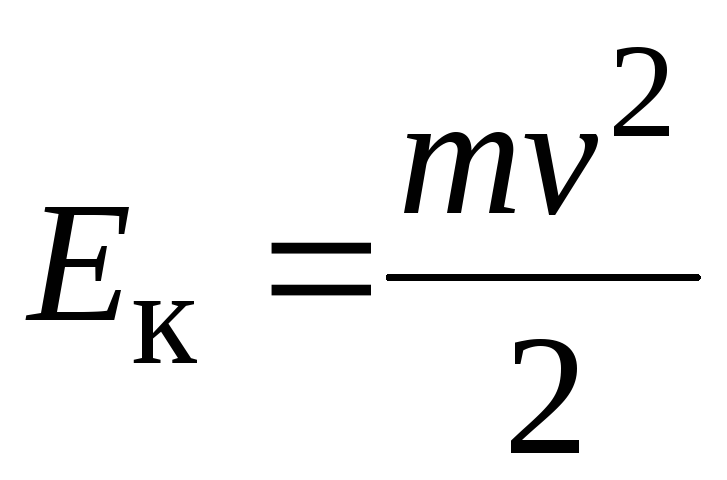
That is, when we talk about the size of an asteroid, we need to take into account not only its average diameter but also its average density. And it, in turn, is determined by the material. We have carbonaceous, silicate, and iron asteroids, and each of the types has a higher average density (and therefore more energy for the same size) than previous. There are also comets, which are essentially asteroids, but made of ice.
In this case, the asteroid’s velocity is in the second power of the kinetic energy formula, so it is actually even more important than mass. This value is formed as the sum of the speed of the Earth itself as it moves around the Sun and the speed of the stone relative to the Sun. So, depending on whether the space rock is flying towards us, ramming the planet sideways, or catching up with it from behind, the results can vary greatly. In addition, we need to take into account the angle at which all this is happening.
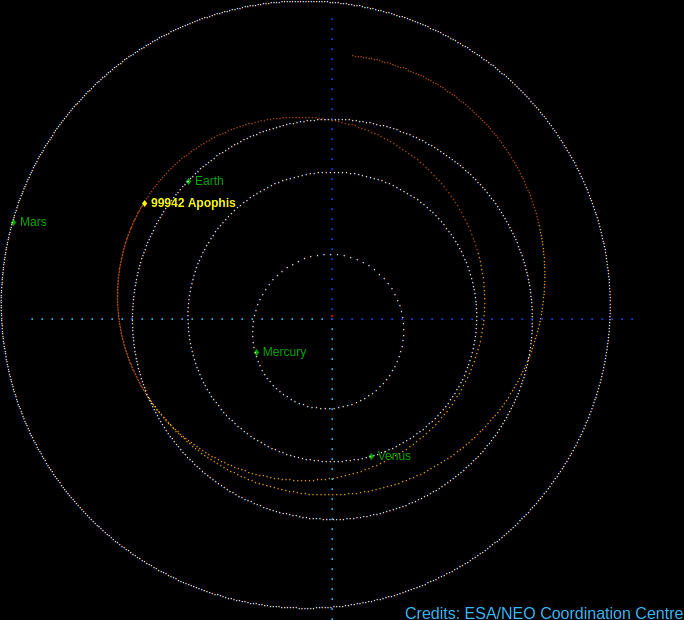
What happens when an asteroid collides with the Earth
As a result of the collision, all this kinetic energy is converted first into mechanical energy and then into thermal energy. This begins to happen long before the impact with the Earth. Our atmosphere also has a certain density, so when an asteroid enters the atmosphere, both its surface and the gas around it begin to heat up rapidly. The former significantly loses its structural strength.
If the space rock is small, the heating due to friction at a certain point of the flight through the atmosphere increases abruptly and causes part of the material to evaporate and break down. Simply put, an air explosion occurs. Its force can be quite comparable to nuclear weapons. Therefore, if it occurs at an altitude of only a few kilometers above the city, it is bad news for the settlement.
First, the kinetic energy of a space rock will turn into is mechanical oscillation of the air. Simply put, it will turn into a blast wave, very similar to the one generated by a missile warhead explosion, only so strong that it can destroy buildings and tear people’s eardrums at a distance of several kilometers or even tens of kilometers from the epicenter.
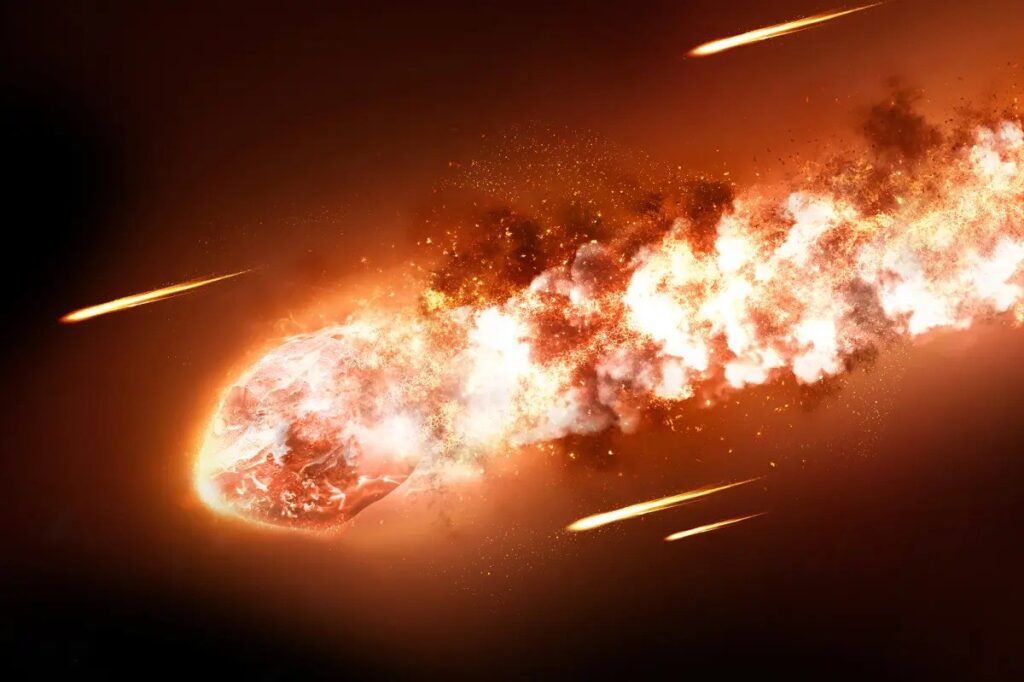
The second dangerous factor is temperature. The air will instantly heat up and will be capable of causing severe burns and fires on trees and wooden structures. In addition, the explosion will change the air pressure in the epicenter, resulting in winds that will exceed the speed of the strongest hurricanes.
If the rock is large enough, its explosion occurs during contact with the Earth. In this case, everything described above happens, but interaction with the lithosphere is also added. Its first manifestation is mechanical vibrations. Simply put, the collision will cause an earthquake, which will also spread over a long distance and can destroy many buildings by itself.
In addition, directly at the epicenter of the fall, the earth will be melted, vaporized, and thrown in different directions. A crater will be formed, the diameter of which will actually be much larger than the size of the asteroid that formed it.
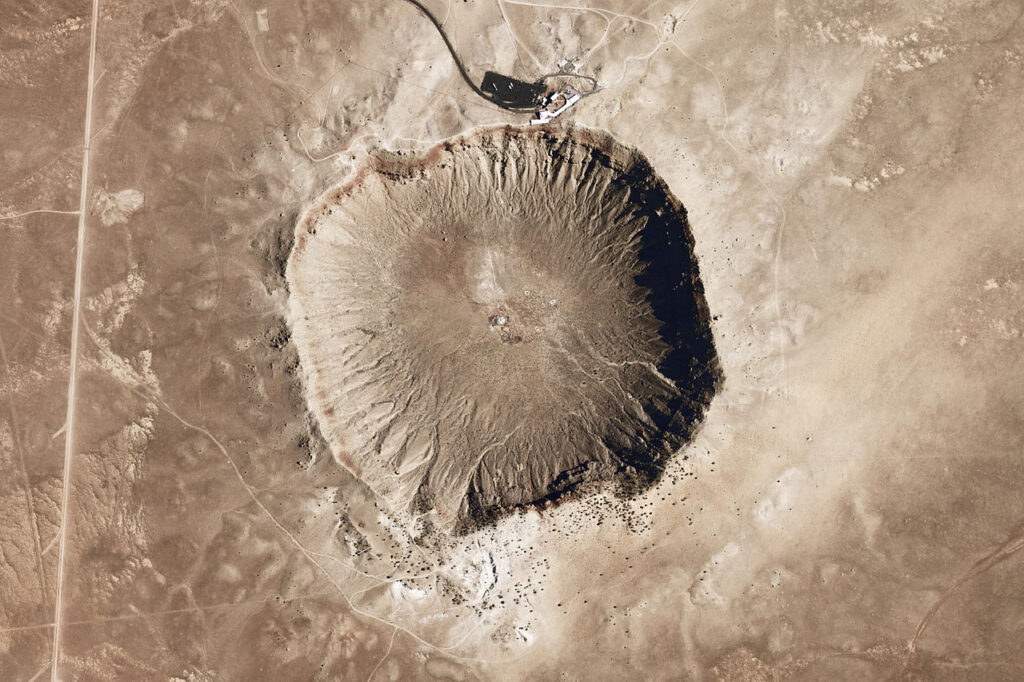
Based on all this data, it is quite difficult to get an unambiguous answer about the size of a space rock that could destroy Moscow. The only thing that can be said for sure is that an asteroid of such a size to leave a crater with a diameter of 50-60 km on the site of the Russian capital is not only unnecessary, but also superfluous. After all, seismic vibrations and a blast wave from such a collision could spread so widely that they could harm other countries as well.
Fortunately, there is a website called neal.fun that allows us to model such collisions. So, using it, we figured out what would happen if space rocks with an average diameter of 30, 100, and 300 meters fell on Moscow.
A 30-meter asteroid
It makes no sense to consider the impact of asteroids smaller than 30 meters in diameter on Moscow. Regardless of the speed, angle of impact, and material of the rock, we are talking about a high-altitude explosion similar to the one that occurred in 2013 in Chelyabinsk. It will be extremely loud, much more terrifying than the Iskander missile explosion. Windows will be blown out of tens of thousands of houses. Trees will fall several kilometers from the epicenter. However, the result will not be close to the destruction of the city.
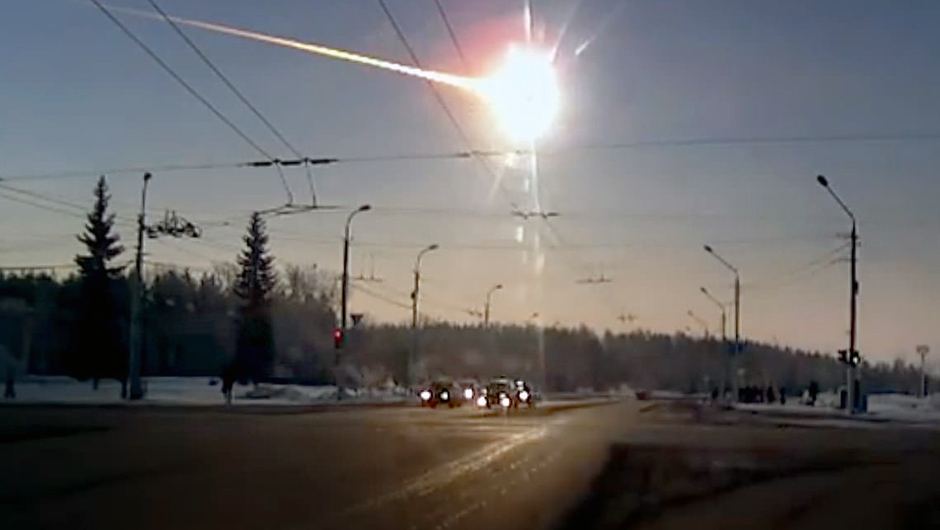
As for a 30-meter asteroid, the consequences will be much more serious. Of course, everything will depend heavily on where the epicenter will be located in a city that is tens of kilometers across. For example, in all situations we have used the assumption that it will be above the Kremlin. This corresponds not only to the decision-making center in Russia, but also to the geometric center of its capital.
30 meters is a size comparable to a multi-story building. It makes no sense to consider the consequences for such an ice body entering the Earth’s atmosphere. First, such small comets do not live long at short distances from the Sun because they evaporate quickly. Second, it would still be the same high-altitude explosion with relatively minor consequences.
In the case of an iron body with a speed of about 15-17 km/s and an impact angle of about 30 degrees, the result will be much more serious. Such parameters correspond to an asteroid that has caught up with the Earth “from behind” and entered its atmosphere tangentially.
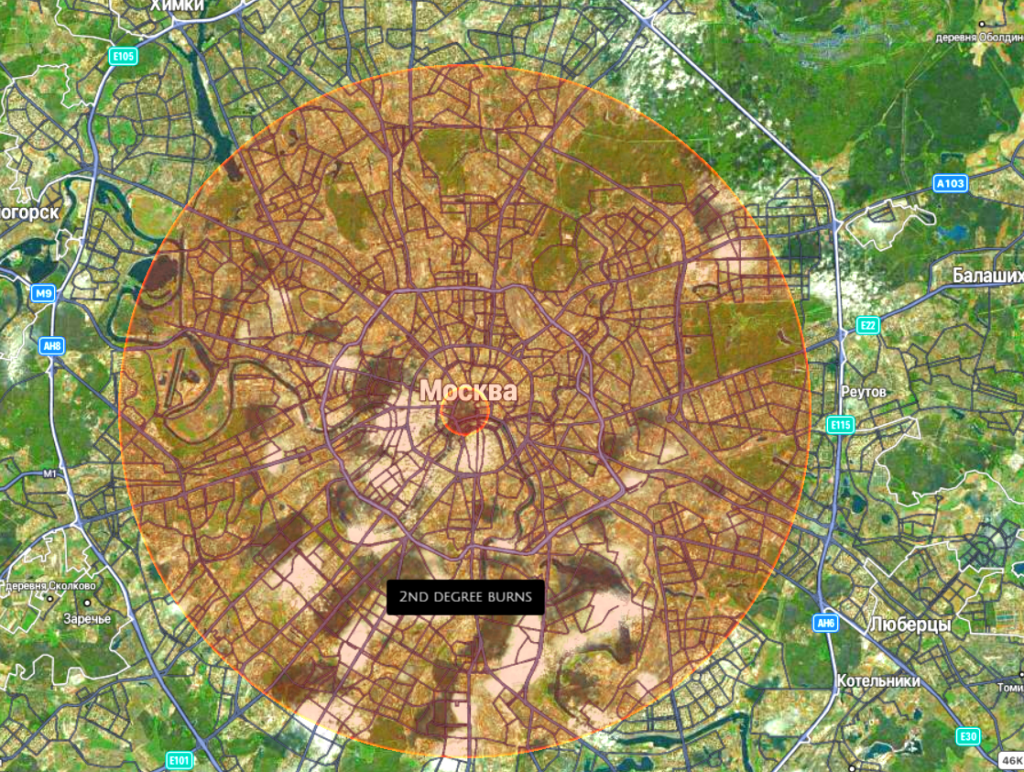
In this case, the explosion will occur at an altitude of 10-12 km. At a distance of up to 13 km from it, trees and unstable wooden structures will catch fire. Carbonaceous and silicate asteroids of this size and course do not pose a danger to Moscow, because the explosions will occur much higher.
But if the angle of impact is greater, it will have more serious consequences. Even at 45 degrees, trees will be knocked down within a radius of 5 km from the epicenter, even if the asteroid is silicate. An iron one will cause fire at a distance of up to 17 km. If the collision occurs at a 60-degree angle, a silicate asteroid will cause fires at a distance of up to 12 km, and an iron asteroid — up to 19 km. At the same time, not only the Kremlin itself, but also stone buildings within a radius of 1.7 km from it will be destroyed by an explosive wave and wind, the strength of which will be comparable to a category III hurricane. Wooden buildings will fall at a distance of up to 5.4 km.
If the speed of the collision is about 40 km/s, i.e. it will occur almost “head-on,” the range of consequences will be completely different. The lightest impact will be with a carbonaceous asteroid at an angle of 30 degrees. It will still be a high-altitude explosion with minimal consequences. The most severe destruction will be caused by a collision with an iron asteroid at an angle of 60 degrees. In this case, the destruction of capital buildings will occur at a distance of up to 7.4 km, wooden houses — at a distance of up to 12 km, and fires at a distance of up to 30 km. All this will still happen inside the Moscow ring road. No crater will form, but most of the city will be in ruins.
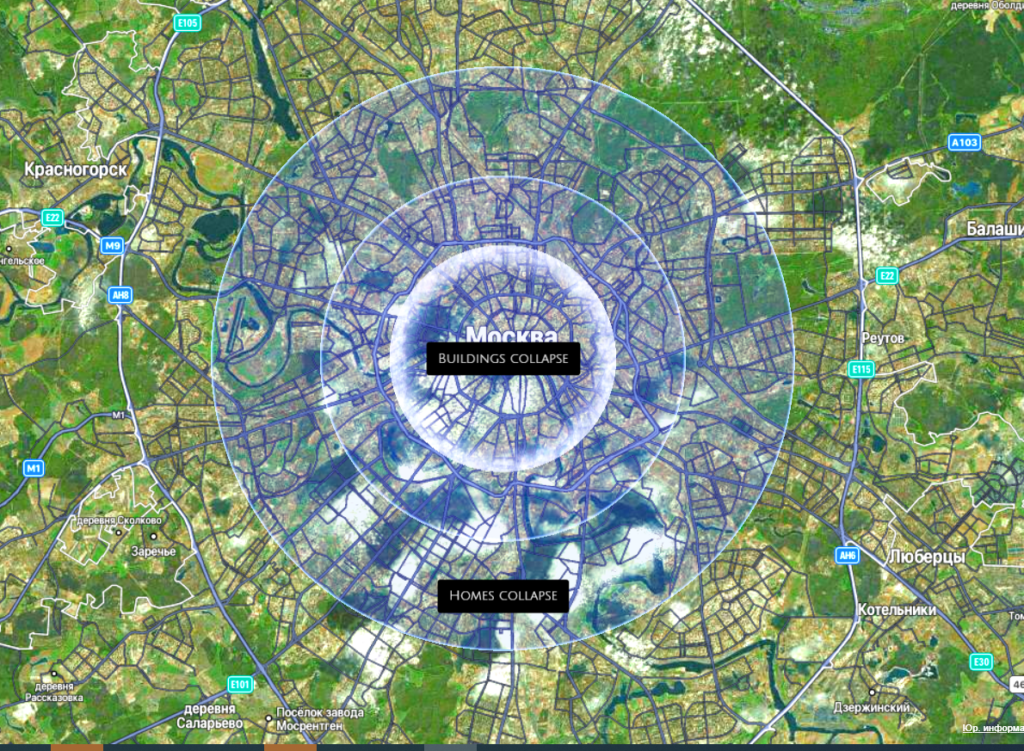
The same asteroid at a speed of 40 km/s and an angle of 60° will cause large-scale destruction
Collision with asteroids with diameters of 100 and 300 meters
An asteroid with a diameter of 100 meters is a much bigger thing. Its size is comparable to Dovbush’s Rock in Ukraine. However, the decisive factor will again be speed. This time, however, the size of the body will be such that even a comet nucleus “catching up” with the Earth will have serious consequences
As a result of its collision with Moscow at a 45-degree angle, trees and wooden structures will fall at a distance of up to 6-8 km, and at a distance of up to 58 km, they will burn. At the same time, capital structures such as the Kremlin will remain relatively intact.
For comparison, an iron asteroid with a diameter of 100 meters on the head-on course and at a collision angle of 60 degrees will be able to reach the surface of the earth. As a result of a collision with it, a crater with a diameter of 3.5 kilometers and a depth of 430 meters will be formed on the site of not only the Kremlin but also all the adjacent neighborhoods. It will gradually be filled by the waters of the Moskva River.
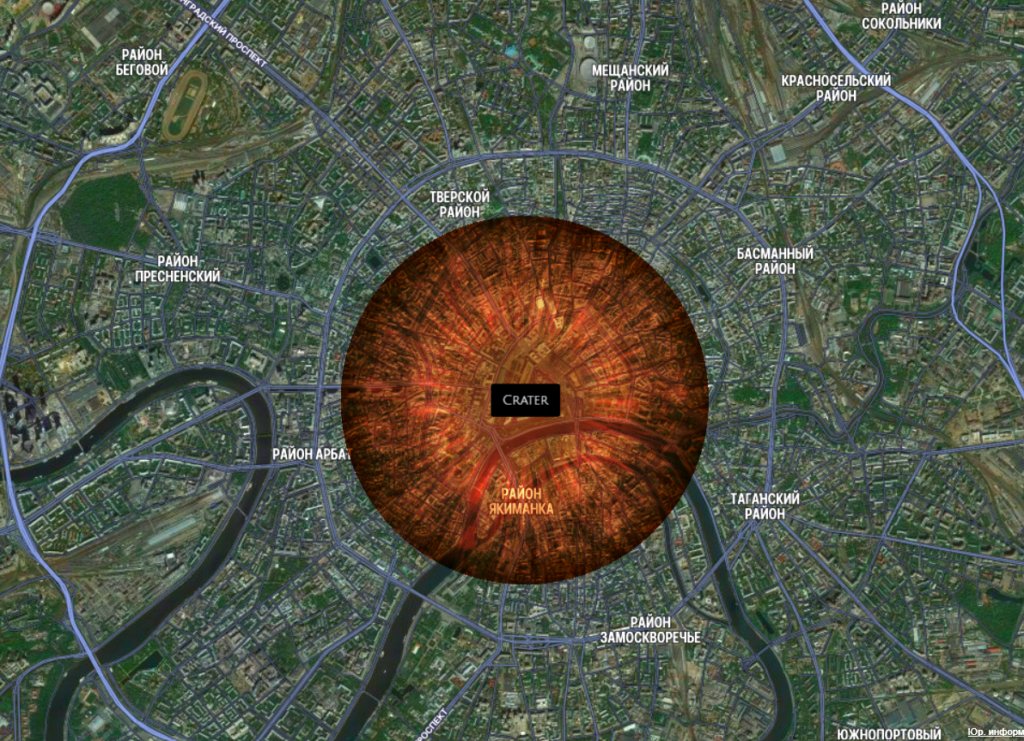
In fact, it is even smaller than the so-called Garden Ring (the central part of Moscow). However, the explosion will be so strong that capital buildings will be destroyed at a distance of up to 31 km, i.e. even beyond the Moscow Ring Road (which actually encircles the whole city). Small private buildings will be destroyed at a distance of up to 41 km, i.e. even in satellite towns like Domodedovo. And tree falls due to strong winds and fires will occur at a distance of up to 45 km from the epicenter.
In addition, an earthquake with a magnitude of up to 6 points will be observed almost throughout the entire vast territory of Moscow, and up to 5 points at a distance of up to 55 km.
A collision with a body with a diameter of 300 meters will have even greater consequences. This is already comparable to the largest skyscrapers on Earth. In this case, even if it is the nucleus of a comet that catches up with the Earth and enters the atmosphere tangentially, a crater with a diameter of 800 meters and a depth of 170 meters will be formed on the site of the Kremlin. The destruction of capital buildings will occur at a distance of up to 4.8 km, and private houses – 6.4 km.
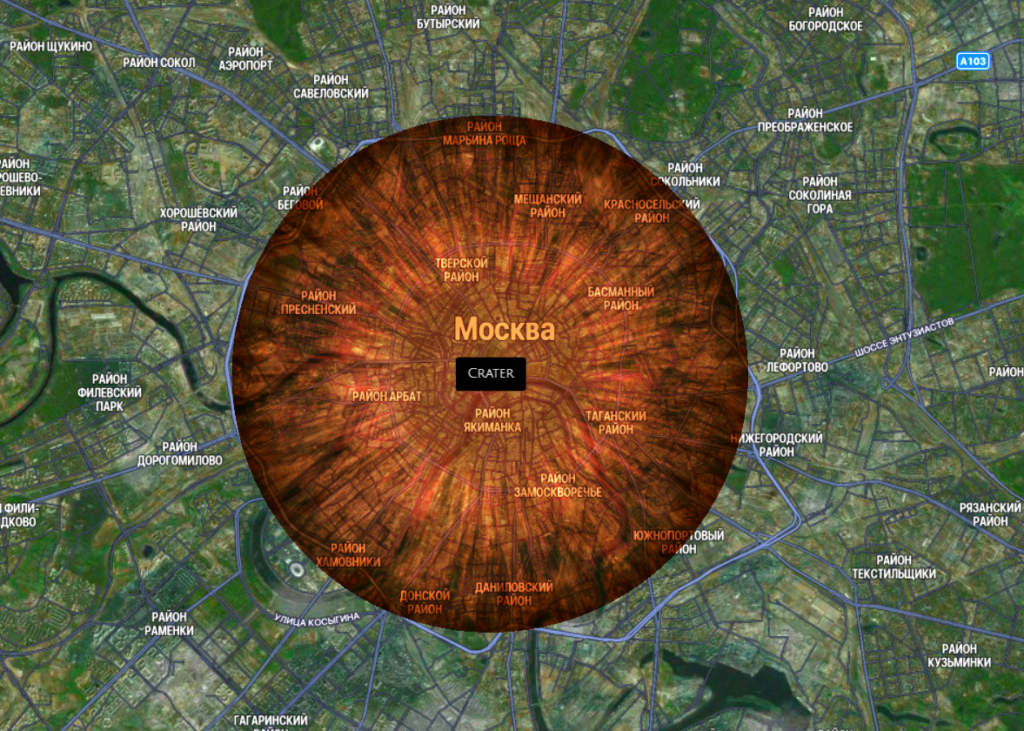
If it is a 300-meter iron asteroid on a direct oncoming course, it could already become one of the largest disasters in the history of the Earth over the past few thousand years. A crater with a diameter of 10 km will be formed on the site of the entire historical center of Moscow. The fireball will reach 15 km in diameter, and fires will break out even in nearby towns Kolomna, Serpukhov, and Mozhaisk. At approximately the same distance, the blast wave and wind will destroy capital and private buildings.
An earthquake with a magnitude of up to 5 will be felt at a distance of up to 250 km. It is quite possible that its reverberations will be felt even in Kyiv. And in Russian cities Tver and Kolomna, it will reach 5 points.
How likely is such an event?
It should be noted that an asteroid hitting Moscow directly, let alone the Kremlin, is an extremely unlikely event. The globe is as large as 510.1 million km2, the Russian capital even with all the suburban areas — 2500 km2, and the Kremlin covers just 28 hectares.
Also, the collision of even such a small asteroid with our planet is not a frequent event. In the case of 30-meter space rocks, it happens once every few decades or centuries. In the case of a 100-meter space rock, we are talking about thousands, and a 300-meter space rock — tens and hundreds of thousands of years separating these events.
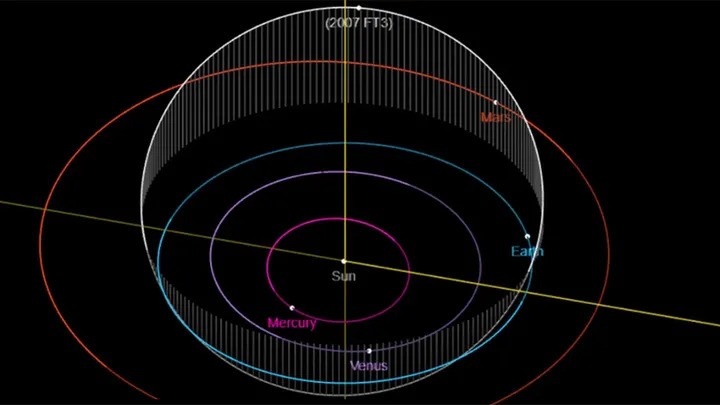
Purely theoretically, such an event could occur as early as October 4 this year. Asteroid 2007 FT3 with a diameter of 340 may collide with the Earth on this day with a chance of 1 in 15 million, but it will almost certainly fly past us at a distance of 1.7 million km. Over the next century, there will be several more such encounters, but they all have the same small chance of ending in collisions.
As for smaller objects, scientists are still unable to systematically track them. Most of them still remain unknown, but reports of close encounters with stones tens of meters in diameter come almost every week.
However, in most cases, we are talking about asteroid flybys at distances comparable to the Moon’s orbit. They rarely come closer than 10 thousand kilometers to the Earth. Therefore, it is highly likely that in the next few decades we will not see a collision with an object that can completely destroy a large city. Perhaps this is for the best.

